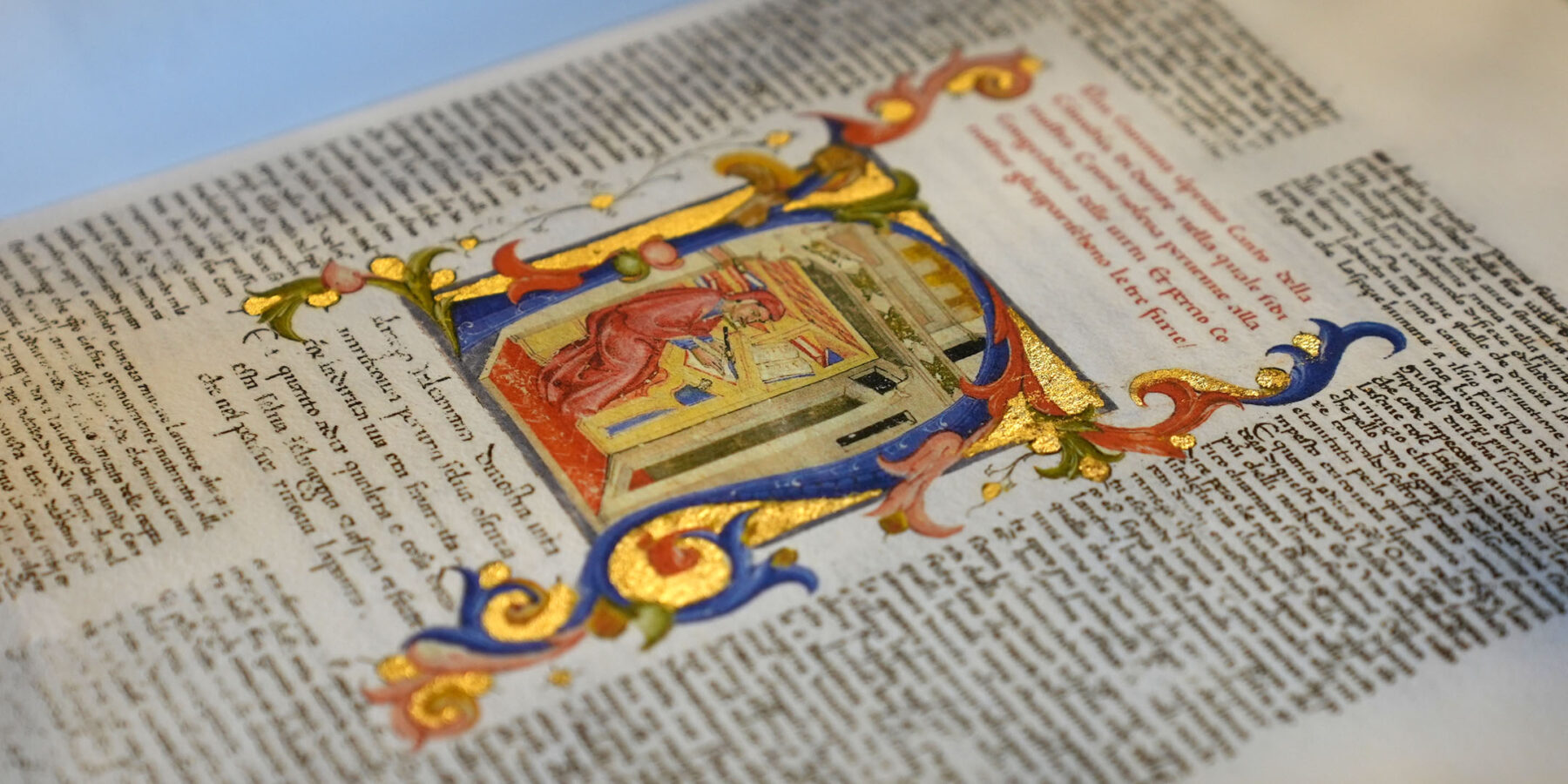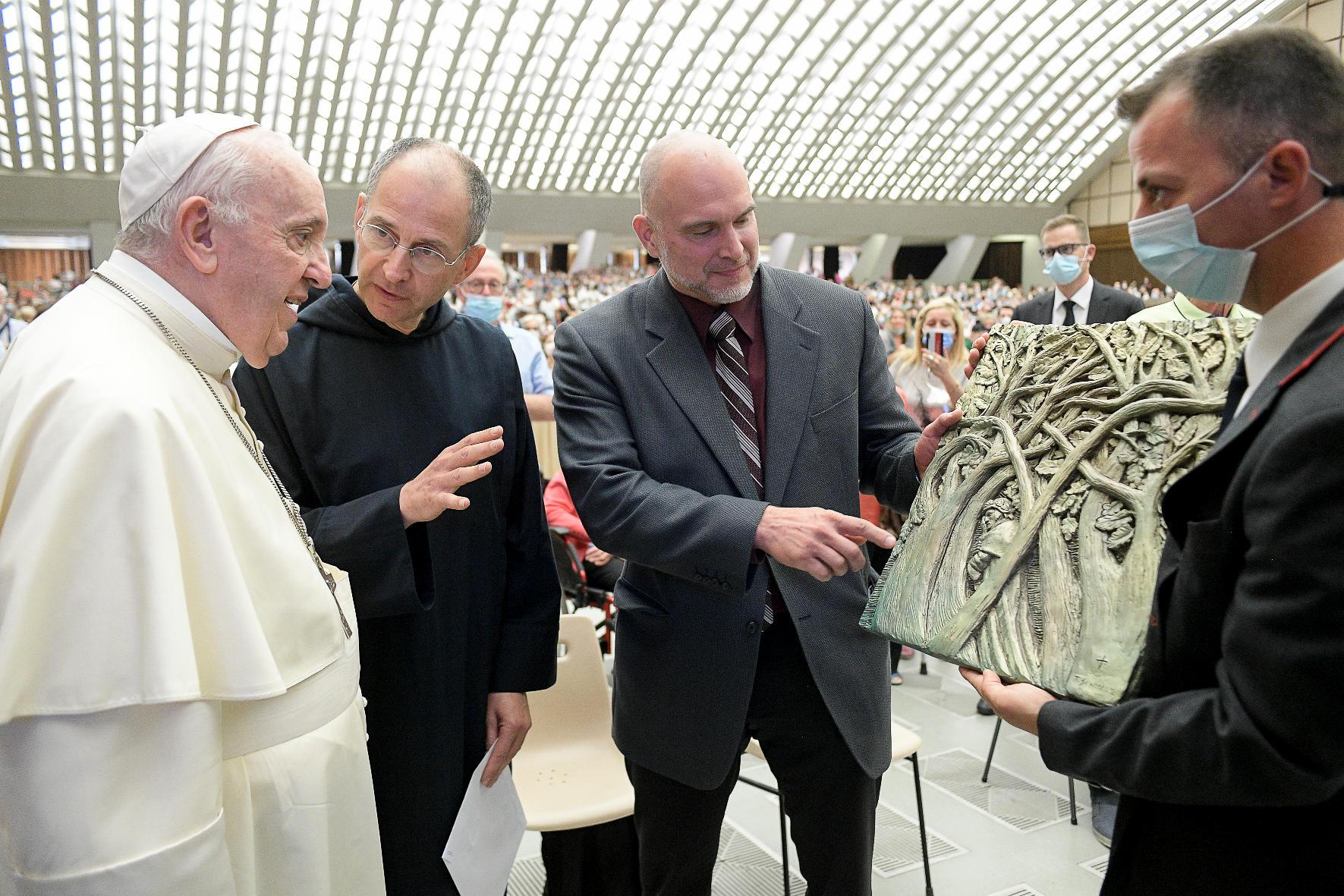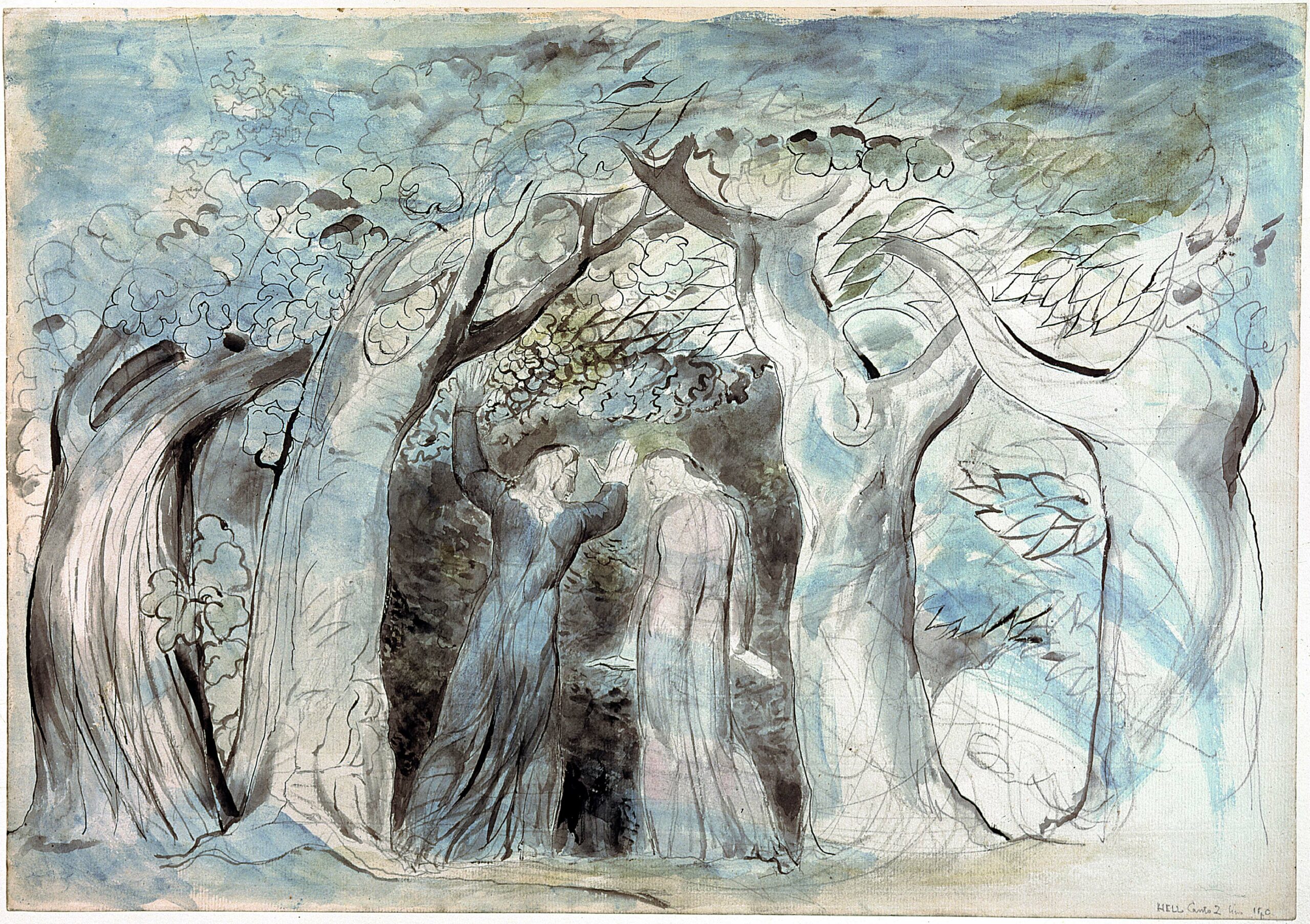Joanne Granata is a Writing Instructor in the University of St. Michael’s College Writing Centre and a University of St. Michael’s College graduate.
A Flicker of Hope in the Darkness

September 14 of this year marked the 700th anniversary of the death of Italy’s “sommo poeta”— Dante Alighieri. As an Italian Studies instructor, and with this week being the International Week of Italian Language and Culture, I would be remiss not to mention or reflect upon this important anniversary. When I was a St. Michael’s student, I studied Dante in many of my undergraduate Italian Studies courses, and, later, he became the topic of some of my own articles and presentations as a graduate student. Now, many years later, Dante’s seminal text on the journey from Hell to Heaven takes on a new meaning for me as a Writing Instructor in the USMC Writing Centre.
Although the central motif in Dante’s Commedia is man’s pilgrimage to God, allow me some poetic license as I reflect on my experiences as a Writing Instructor through the lens of Dante’s Commedia. Dante begins by expressing a sentiment of being lost in a “shadowed forest” (Inf.1.2), a “savage forest, dense and difficult” (Inf.1.5). Often, as a writer, we too can be just like Dante, feeling overwhelmed by the prospect of an assignment, lost in the dense forest of our thoughts. While writing this piece, I found myself reminiscing about my own undergraduate days, spending many late nights with my peers in the Kelly Library, lost, so to speak, in the mountain of books and notes and papers strewn across my favourite table, writing research papers, trying to find my way back to the “path that does not stray” (Inf. 1.3). Now, as a Writing Instructor in this same building, I assist students with some of these same difficulties, some of whom are taking the same courses I took as an undergrad. The irony is not lost on me. I can’t help but smile and think, ‘funny how life works sometimes’.
As a Writing Instructor, I have the privilege of meeting many exceptional students with great minds, who, like all of us, have different approaches to research and writing, to their education, and to life in general. Many come to the Writing Centre and are often unsure of what to do, fearful to make a mistake or to do “poorly”. They are, in a sense, like Dante: faced with a long and difficult journey, and afraid, “hindered in [their] path along that lonely hillside” (Inf. 2.63), but still eager and willing to make that journey up the mountain to reach their desired destination.
Like Dante, the students I see slowly begin to find a way out of the “savage forest, dense and difficult” (Inf.1.5); they begin to recognize the “error of their ways”, so to speak, and, with a little gentle nudge here and there by their Virgilian guides, begin to see a path through to the light. Many receive the reassurance they were seeking or are gently prompted into a successful brainstorming session that leaves them filled with satisfaction. After an appointment perhaps their understanding of an assignment isn’t as black-and-white as they had liked; perhaps it is more grey than when they arrived, but, much like Dante, they “[grow] to be as one who, while he wants what is not his, is satisfied with hope” (Par. 23.13). That hope, that “certain expectation/of future glory […] the result/of God’s grace and of merit we have earned” (Par. 25.67–69) often instills a sense of confidence within our students. They leave their appointment having learned a new skill or having worked out a major problem in their writing. More importantly, they leave with the knowledge that they can succeed, that they can exit that dark forest and reach the top of Dante’s sunlit mountain.
What is so interesting is that of course the sense of satisfaction or hope does not remain solely with the student, but spreads throughout the community; our students impart it onto their colleagues, and onto us, their Writing Instructors. I am often amazed and inspired by the perseverance and dedication of many of our students; although they come to me for help, it is often they who help me. They share their newfound hope and energy with me, and then I am able to take that hope and that sense of having helped and guided someone along the “right path” into my next appointment and into the next. After such a long struggle with our global pandemic, this flicker of hope, in the most unexpected of places, becomes a reminder that, just like Dante’s journey, there is always light in the darkness.
Read other InsightOut posts.
On October 20, join St. Mike’s Book and Media Studies prof. Paolo Granata and a panel of experts in Medieval studies and manuscript culture to explore one of the oldest and most richly decorated medieval copies of Dante’s Divine Comedy ”Inferno.”
A Journey through the Centuries: The Making of Dante Guarneriano

Amanuenses from the Scriptorium Foroiuliense in San Daniele (Italy) will hold a series of workshops to teach the secrets of the century-old tradition of Medieval calligraphy.
A virtual tour of the Opificium Librorum and Biblioteca Guarneriana, live from San Daniele del Friuli, will showcase “in real-time” the making of a Medieval manuscript.
On October 20-21-22, 2021, for the International Week of Italian Language and Culture, the Department of Italian Studies at the University of Toronto, in collaboration with St. Michael’s College, Massey College, and the Istituto Italiano di Cultura in Toronto, presents a series of events to celebrate the father of the Italian language, the Mediaeval poet and philosopher Dante Alighieri, and his groundbreaking trilogy, the Divine Comedy, in the year that marks the 700th anniversary of the death of the “sommo poeta”.
A magnificent handmade illuminated anastatic copy of the “Inferno”, known as Dante Guarneriano, will travel to Toronto from the Biblioteca Guarneriana in San Daniele del Friuli, one of Italy’s oldest and most venerated public libraries, founded in 1466 by humanist Guarniero d’Artegna and enriched with the collection of Archbishop and bibliographer Giusto Fontanini in the 18th century. The Dante Guarneriano is one of the oldest and most richly decorated Medieval examples of Dante’s Divine Comedy “Inferno”, dated late 14th to early 15th century. Miniatures and historiated initials are attributed to Bartolomeo di Fruosino, one of the most influential illuminators of the Florentine School. A notable miniature in the Dante Guarneriano depicts Dante in his studiolo (within the historiated initial “N” which marks the famous incipit of Dante’s journey through Hell: “Nel mezzo del cammin di nostra vita…”).
The copy of the Dante Guarneriano that will be displayed in Toronto has been handcrafted by the Scriptorium Foroiuliense in San Daniele, one of the most esteemed centers of Medieval calligraphy and book production in Italy. Specialized in Medieval historical scripts and manuscript production, the Scriptorium Foroiuliense—Scuola Italiana Amanuensi—has produced a dozen anastatic copies of the Dante Guarneriano, on handmade paper 100% cotton fibers, following the traditional techniques used to create the lavishly illuminated manuscripts, including miniatures gilded with gold leaf, finely decorated illustrations, and Medieval luxury bookbinding techniques. The handcrafted illuminated anastatic copy of the Dante Guarneriano will arrive in Toronto with a delegation of the City of San Daniele, namely Mayor Pietro Valent and the amanuenses of the Scriptorium Foroiuliense.
On October 20, the Italian delegation will join a panel of experts in Medieval studies and manuscript culture—York University’s Professor Samia Tawwab—coordinated by University of Toronto’s Professor and Senior Fellow at Massey College Paolo Granata, to officially present the copy of the Dante Guarneriano, exploring the making of this unique bibliographic artifact. The event will be live streamed on YouTube at 4:30 pm EST from Massey College for the Massey Dialogues series.
Following the presentation event at Massey College, on October 21 and 22, at St. Michael’s College and Massey College, amanuenses of the Scriptorium Foroiuliense, specialized in Medieval historical scripts such as Gothic Textura, Uncial, Beneventan, Carolingian, will hold a series of free workshops open to University of Toronto students as well as to the general public (registration required; COVID-19 protocols will be observed).
The series of events to celebrate the Dante Guarneriano will conclude on October 22 with a virtual tour of the Opificium Librorum and Biblioteca Guarneriana, live from San Daniele del Friuli, to showcase “in real-time” the making of a Medieval manuscript and its century-old tradition. The event will be live streamed on YouTube and Facebook at 4:30 pm EST.
Info and registration:
https://danteguarneriano.eventbrite.ca
St. Michael’s Assistant Professor Stephen Tardif offers a preview of his new course Dante and the Christian Imagination in this Mediaeval Minute:

The gift of an ambitious art installation is helping the University of St. Michael’s College mark the 700th anniversary of the death of poet Dante Alighieri in a unique way.
The work, entitled The Dante Gardens, reflects the poet’s journey through Hell and Purgatory and finally to Heaven as depicted in The Divine Comedy, considered one of the greatest works of all time. The installation, created by sculptor Timothy Schmalz, consists of 100 panels, reflecting the 100 cantos of the poem, as well as a sculpture of Dante at work.
The complete work is to be installed on the southwest corner of St. Michael’s campus in the spring of 2022. Ongoing complications due to COVID have delayed the installation of the work, which had been scheduled closer to the Sept. 14 anniversary date of Dante’s death.
For sculptor Schmalz, the work is not only a labour of love, but also a re-emphasis of what he sees as inadequate renderings of The Divine Comedy in the past. While the poem relates the journey of the soul after death and includes views of Hell (Inferno), Purgatory (Purgatorio), and Heaven (Paradiso), he says visual representations have tended to focus primarily on Hell.
“When the focus is just on Hell it ceases to become a comedy,” Schmalz says. “And it’s not very Catholic to skip purgatory and paradise. There is hope and joy, too.”
University President David Sylvester says the installation, in a prominent location in downtown Toronto and visible to passersby, will serve as an introduction to Dante for many, and will provide a spot for people to stop in the midst of their day to ponder some of life’s biggest questions.
“St. Michael’s has long been known for its appreciation of Dante as a major part of Christian im-agination. We host an annual Dante Lecture and house a substantial Dante Collection in the Kelly Library,” says Dr. Sylvester. “The Dante Gardens will offer a new way for the University to engage its students and the broader community with the genius of Dante.”
The acquisition of the sculptures by St. Michael’s was made possible by a very generous gift to the University by patrons Maurizio Bevilacqua and Tony and Lina Gagliano.

